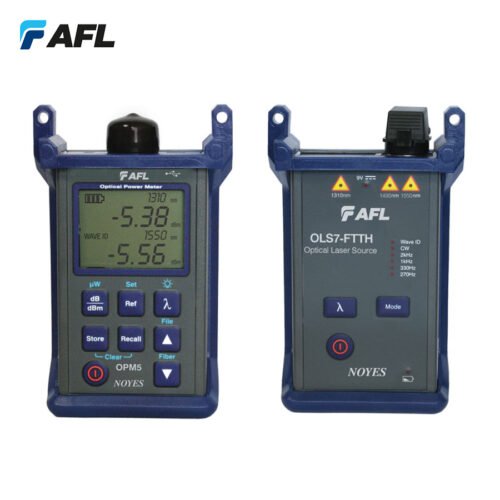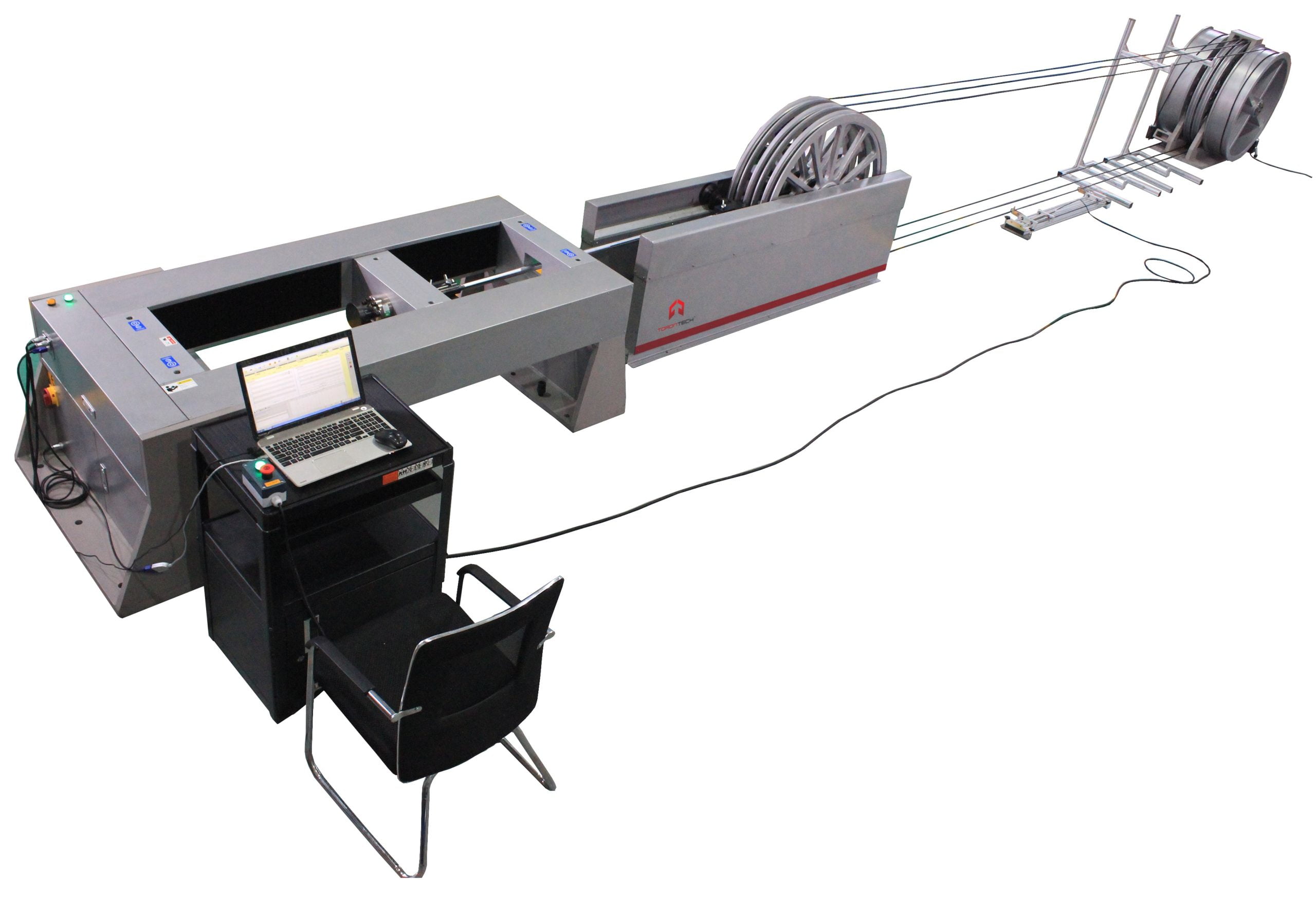Understanding Just How an Optical Measurement System Boosts Precision in Industrial Applications
Optical measurement systems play a crucial duty in enhancing accuracy throughout different commercial applications. By leveraging advanced innovations such as laser interferometry and 3D imaging sensing units, these systems offer high-resolution, non-contact measurements. This capability reduces the threat of damaging delicate components while making certain precision. The impact of these systems expands beyond simple dimensions. Exploring their benefits, applications, and future fads discloses a complicated landscape of development and challenges that merits closer assessment.
The Fundamentals of Optical Measurement Systems
Optical measurement systems act as essential devices in different commercial applications, supplying specific data collection and analysis. These systems utilize light as a key means of measurement, leveraging optical principles to examine measurements, positions, and surface area characteristics of things. They incorporate elements such as lasers, cameras, and sensing units, which collaborate to catch high-resolution images and information.
The modern technology makes it possible for non-contact dimensions, lessening the risk of damaging delicate elements. Optical measurement systems are versatile, finding utility in quality assurance, setting up confirmation, and dimensional analysis throughout different sectors. They are specifically efficient in settings where conventional measurement techniques might drop short, such as determining complex geometries or observing fast activities.
As industries remain to develop, the combination of optical measurement systems will certainly stay critical for guaranteeing precision and efficiency, inevitably enhancing product high quality and functional productivity in numerous making processes.
Trick Technologies Behind Optical Measurement
Trick technologies such as laser interferometry strategies and 3D imaging sensing units play a crucial role in the effectiveness of optical measurement systems (robotic vision). These innovations allow specific measurements and thorough evaluation in various industrial applications. Comprehending their performances is necessary for taking advantage of the full potential of optical measurement systems
Laser Interferometry Techniques
Various laser interferometry methods have actually changed the area of optical measurement, providing extraordinary precision and accuracy in different industrial applications. These strategies utilize the disturbance of systematic light waves to determine distance, variation, and surface irregularities with nanometer-level precision. Usual methods include Michelson interferometry, which divides a beam of light and evaluates phase shifts, and Fabry-Pérot interferometry, recognized for its high resolution in gauging small modifications. In addition, laser Doppler interferometry utilizes frequency shifts to examine speed, making it vital in vibrant dimensions. The flexibility of these techniques enables their assimilation right into varied manufacturing processes, enhancing top quality control and guaranteeing adherence to strict resistances. As an outcome, laser interferometry remains to play a critical function ahead of time industrial measurement criteria.
3D Imaging Sensors
Improvements in measurement innovation have actually brought about the advancement of 3D imaging sensors, which play a considerable function in optical measurement systems. These sensing units record three-dimensional information with various techniques such as triangulation, time-of-flight, and organized light. By precisely reconstructing the form and dimensions of items, 3D imaging sensing units improve the precision of dimensions in industrial applications. They provide real-time comments, facilitating quality assurance and making certain that parts fulfill stringent specifications. In addition, their ability to run in tough environments, such as varying lighting problems, makes them important in producing procedures. As industries progressively adopt automation, the combination of 3D imaging sensors right into optical measurement systems is anticipated to drive more improvements in effectiveness and precision.
Benefits of Optical Measurement in Industry
Typical measurement approaches have actually long been the requirement in industrial settings, optical measurement systems provide substantial advantages that improve precision and performance. These systems use light to capture information, causing high-resolution measurements that are typically unattainable with conventional methods. The non-contact nature of optical dimensions decreases the danger of damaging sensitive components during the assessment procedure. In addition, the rate of optical dimensions allows for fast information acquisition, promoting timely decision-making in hectic commercial environments.
Optical systems are versatile, efficient in determining various products and shapes without the demand for substantial recalibration. This versatility contributes to improved operations and performance. The automation possibility of optical measurement systems decreases human mistake, guaranteeing constant quality control. On the whole, click here for info the assimilation of optical measurement modern technology stands for a progressive change towards improved precision and integrity in industrial procedures, inevitably bring about enhanced product quality and functional performance.
Applications of Optical Measurement Systems

Optical measurement systems play a pivotal role in improving production procedure optimization by giving exact information for decision-making. These systems ensure top quality control guarantee through real-time tracking and evaluation of production metrics. As sectors significantly adopt these innovations, their effect on efficiency and item dependability ends up being apparent.
Manufacturing Process Optimization
Enhancing manufacturing process effectiveness is increasingly reliant on the assimilation of optical measurement systems. These systems give real-time data on numerous specifications, permitting producers to assess processes with a high level of accuracy. By making it possible for exact measurements of measurements, surface attributes, and material residential properties, optical measurement systems promote the identification of ineffectiveness and bottlenecks in assembly line. The prompt feedback from these systems empowers designers to make educated choices, resulting in maximized machining, assembly, and ending up procedures. In addition, the capability to monitor conditions continuously enables flexible changes, lessening downtime and waste. As industries objective for better productivity and minimized operational expenses, optical measurement systems become vital devices for important source enhancing manufacturing process optimization.

Quality Assurance Guarantee
The integration of optical measurement systems significantly influences high quality control assurance in commercial setups. These systems provide exact and non-destructive measurements, allowing manufacturers to identify issues and variances early in the manufacturing process. By using sophisticated imaging strategies, such as laser triangulation and interferometry, optical measurement systems guarantee that parts fulfill rigorous specs. This facilitates real-time surveillance, decreasing waste and reducing the danger of damaged items getting to the marketplace. Additionally, the information gathered can be assessed to fine-tune production procedures even more, causing continuous enhancement. Ultimately, the fostering of optical measurement systems improves integrity and consistency in high quality control, promoting better confidence among stakeholders and customers alike in the end products delivered.
Instance Researches: Successful Applications
Countless sectors have actually efficiently incorporated optical measurement systems to enhance their functional effectiveness and product high quality. In the automotive sector, a popular manufacturer adopted a laser triangulation system to keep track of the placement of car parts. This implementation significantly lowered assembly errors, bring about enhanced safety and lowered prices.
In the aerospace market, a leading aircraft maker made use of optical width for precision dimensions of generator blades, achieving a reduction in producing resistances and much better performance standards.
A customer electronic devices business carried out optical measurement innovation during the manufacturing of smart device displays, resulting in enhanced top quality control and a decline in defective items.
These situation studies show just how optical measurement systems not only enhance precision however additionally contribute to total functional efficiency, demonstrating their worth throughout various sectors. By dealing with specific demands, these systems have verified to be vital tools in contemporary commercial applications.
Obstacles and Limitations of Optical Measurement
While optical measurement systems provide considerable benefits in different industrial applications, they are not without their challenges and restrictions. One significant worry is level of sensitivity to ecological problems, such as temperature level variations, humidity, and dust, which can negatively impact measurement accuracy. In addition, optical systems often call for accurate placement and calibration, making them vulnerable to human error throughout arrangement and procedure. An additional limitation is the capacity for interference from ambient light, which can misshape dimensions and require complicated filtering techniques. In addition, certain materials and surfaces may present problems, as reflective or clear characteristics can bring about irregular readings. The price of premium optical elements and systems can additionally be an obstacle for some industries, restricting extensive fostering. Specialized training is commonly needed for employees to successfully operate and maintain these systems, including to the general complexity and functional difficulties.
Future Trends in Optical Measurement Modern Technology
As improvements in modern technology remain to shape industrial processes, the future of optical measurement systems is poised for substantial development. Emerging fads suggest look at these guys a change in the direction of improved combination of synthetic intelligence and artificial intelligence, allowing systems to analyze information in real-time, identify patterns, and enhance decision-making procedures. In addition, the growth of miniaturized sensors and advanced optics is expected to cause even more compact and versatile measurement options, making them accessible for a wider variety of applications.
In addition, the incorporation of 3D imaging and high-resolution abilities will certainly enable unmatched precision in dimensions, which is crucial for markets such as aerospace and vehicle. The promote automation and Industry 4.0 will certainly also drive the demand for optical measurement systems that can easily user interface with other innovations. As these fads unfold, optical measurement systems will likely come to be indispensable to achieving greater performance and accuracy across different commercial industries.

Frequently Asked Questions
Exactly How Do Optical Measurement Systems Compare to Conventional Measurement Approaches?
Optical measurement systems use greater accuracy and rate contrasted to standard methods - optical fibre diameter analyser. They minimize human error, improve information collection performance, and supply real-time results, making them progressively liked in numerous industrial applications for exact dimensions
What Industries Advantage the A Lot Of From Optical Measurement Systems?
Optical measurement systems substantially benefit sectors such as aerospace, automotive, and electronic devices. Their capacity to offer high-precision dimensions enhances quality assurance, reduces production errors, and boosts overall effectiveness, making them vital in competitive production atmospheres.
Can Optical Measurement Systems Be Customized for Certain Applications?
Optical measurement systems can indeed be customized for particular applications. By readjusting parameters such as wavelength, resolution, and calibration methods, markets can customize these systems to fulfill distinct precision and precision demands properly.
What Is the Maintenance Demand for Optical Measurement Systems?
The maintenance demands for optical measurement systems normally include regular calibration, cleaning of optical components, and software updates. Abiding by these techniques guarantees precision, reliability, and longevity of the measurement devices in various applications.
Just How Do Ecological Aspects Influence Optical Measurement Precision?
Ecological factors, such as temperature fluctuations, humidity, and dust, significantly influence optical measurement precision. These elements can distort light paths and conflict with sensing unit analyses, ultimately jeopardizing the dependability and accuracy of measurements in industrial settings.